Who doesn’t know the popular story “Three Hazelnuts for Cinderella”!? What I didn’t know until now, is that the filming of 1972 also took place in the Czech castle of Švihov. But that’s not the only good reason to visit the castle, there’s a lot to see.
Švihov Castle is located in Švihov in the Klatovy district of the Czech Republic. Not quite on the way from Pilsen to Český Krumlov for us, but the little diversions was definitely worth it!
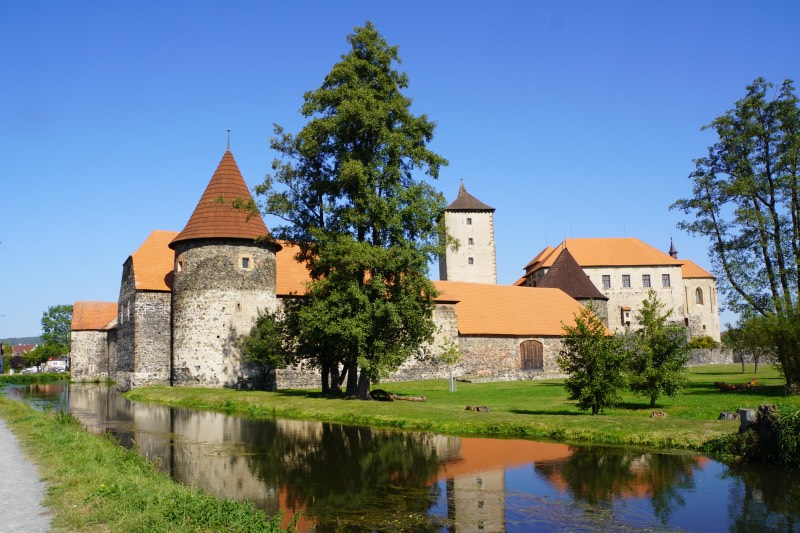
History of Švihov Castle
At the end of the 15th century, the castle was built by Půta von Švihov (Botho (Puta) Schwihau von Riesenberg), who was the chief judge in the Bohemian Kingdom at that time. In this office, he was one of the most powerful men in the country and so it is not surprising that he had considerable land holdings due to his position. In addition to the castle in Švihov, he also owned the castles of Rabí and Prácheň and various other properties in northern Bohemia and Silesia.
Švihov Castle is a water fortress on an artificial island in a shallow and wet river valley. The castle consisted of two palaces, the castle chapel and a tower surrounded by an inner fortification with four corner bastions and a moat. In front of this was the outer fortification with another moat.
After Půta died and his sons could not keep the estate, the owners changed a few times.
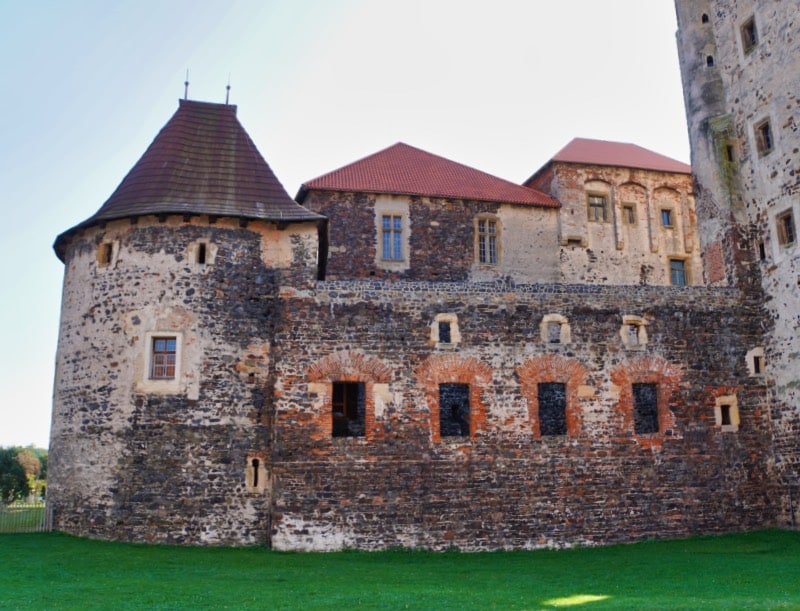
After the end of the Thirty Years’ War, Emperor Ferdinand III issued a decree to demolish numerous castles in Bohemia. Švihov Castle also fell under this decree, but was at least partially preserved due to successful delaying tactics with only very slow demolition. The then owner Černín subsequently turned the castle into an agricultural farm. The palaces were used as granaries and stables, which continued to be used until the 20th century. Unfortunately, the building was neglected and in 1926 Švihov Castle was declared a ruin.
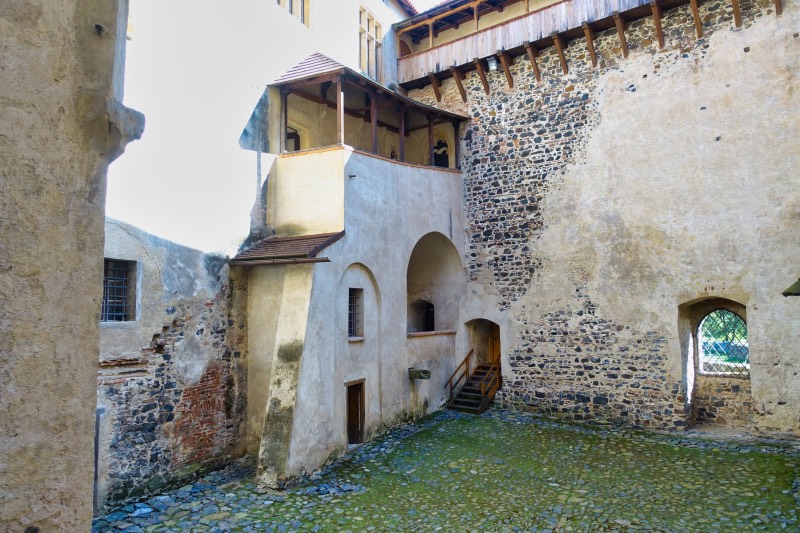
The last owner of Švihov Castle until the end of the Second World War was Eugen Count Czernin von und zu Chudenitz, from a Bohemian noble family from the ancestral castle of Chudenice in the immediate vicinity of Svihov. He was expropriated after the war. Švihov Castle was placed under the control of the National Cultural Commission. This initiated the renovation. Today the castle is open to visitors on guided tours.
Visit to Švihov Castle
From the car park it is only a few steps to the castle complex. You will pass the moat and a path that leads around the castle.
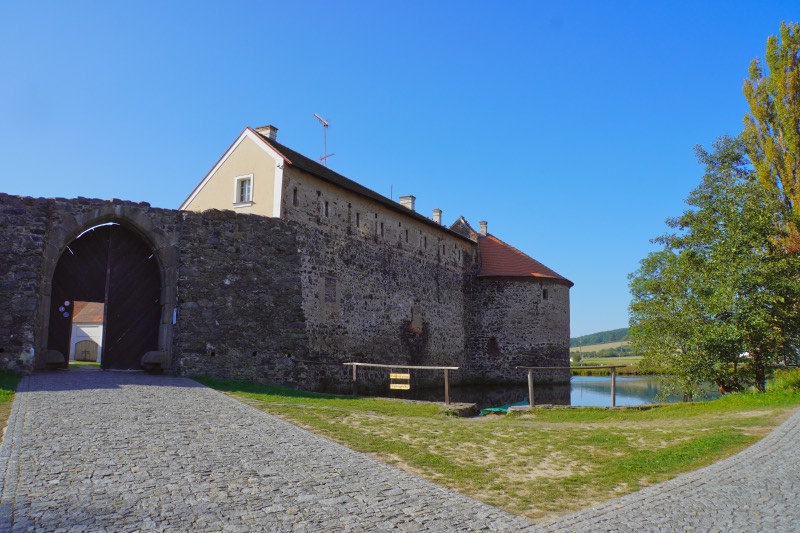
“Three Hazelnuts for Cinderella”
The spacious interior area, in front of the actual castle building, is accessible without having to pay admission. This makes it possible to see the farm buildings that served as a backdrop for the 1972 filming of the classic “Three Hazelnuts for Cinderella”.

The moated castle did not represent a proud noble castle in the film. It served as a backdrop for the place where Cinderella lived with her stepmother and stepsisters. The film crew made changes to it, added places and, for example, had the current exhibition hall next to the box office converted into a horse stable for the white horse.
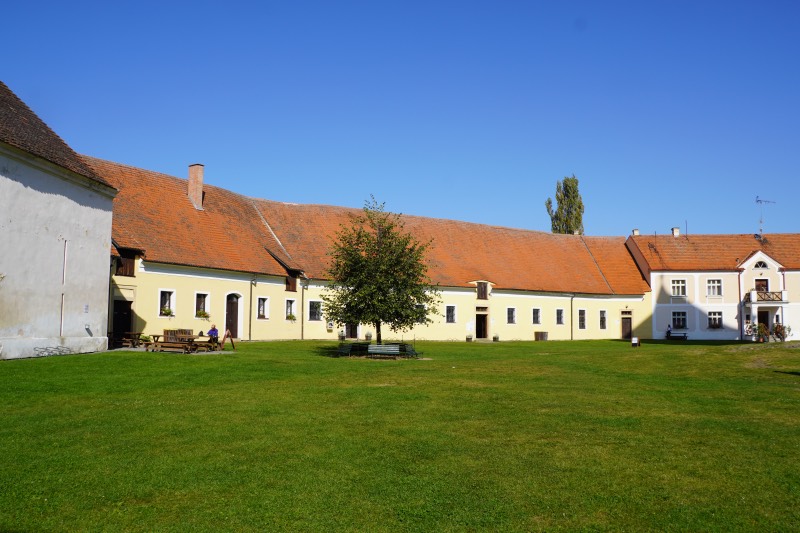
There is the possibility to see an exhibition on the film with original wardrobes and film equipment in the rooms of the castle. However, this is only possible as part of a guided tour. Unfortunately, when we were there, this tour was not offered.
If you want to see more, you can hike along a signposted route of about 5 kilometres, which leads to other places where pictures were taken: for example, Cinderella’s orchard and the pond in the neighbouring village.
Švihov Castle: Guided tour “The Kitchen
We opted for a slightly different guided tour during our visit. The castle itself with the rooms may certainly be interesting, but will certainly be quite similar to other castles. We decided to discover the rooms in the background. The rooms that are necessary for the operation of the castle are shown.
The guided tour called “The Kitchen” takes place in Czech, like all the guided tours offered at the castle. However, there are small booklets with the English texts explaining the most important things.
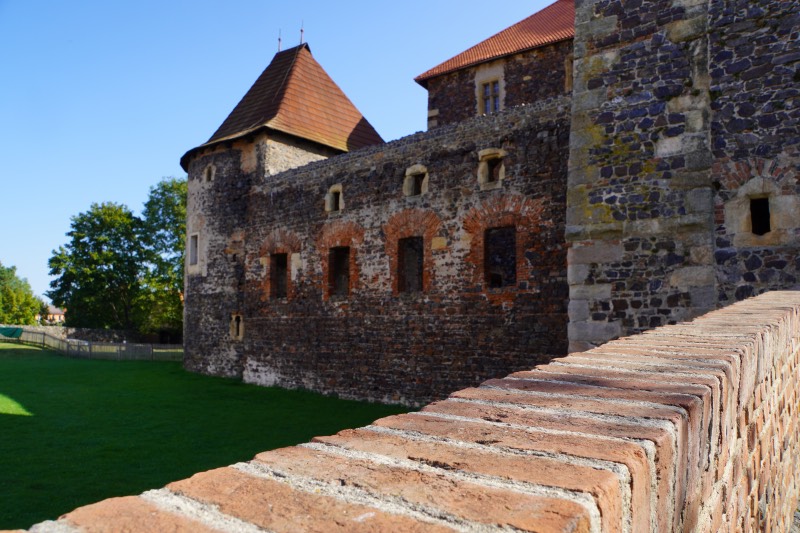
Our group during the guided tour consisted of 6 people, including the guide, which was really nice and manageable.
After unlocking the door to the castle with a huge bunch of keys, we entered the castle’s Western Zwinger. The square courtyard is surrounded by the walls of the south and north palaces, the corridor wing to the west, the connecting walls and the chapel to the east. After some historical background on the castle, we were pointed to a special feature. Under the corridor wing lies a preserved sewage system. This was supposedly used to flood the courtyard during attacks and thus protect the buildings and their inhabitants. When the danger was over, the water could be drained off again through the system.
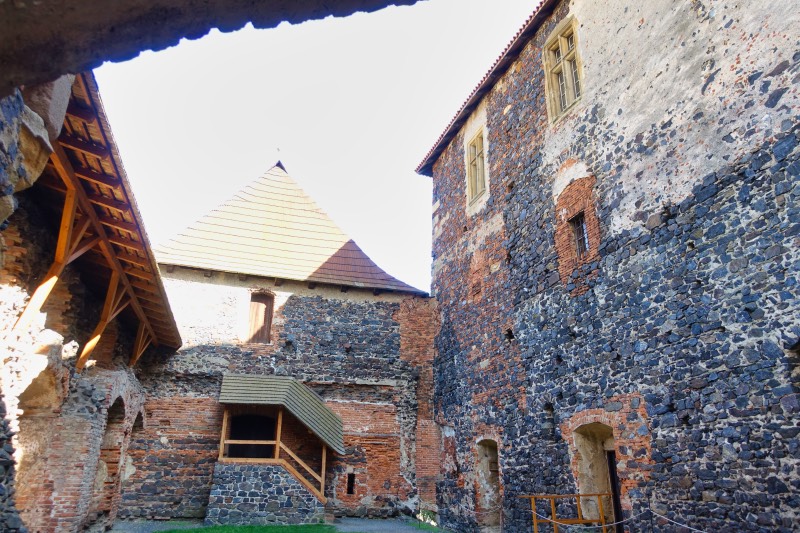
The cellars
Then we went to the cellars under the South and North Palaces. Different foodstuffs were stored in each cellar (depending on humidity and cold) and so there was, for example, a milk cellar, a bread cellar, the wine cellar and the beer cellar. Today, for example, in the bread cellar you can learn about the history of baking bread and see a small exhibition on the subject.
Guardroom
Next we entered the rooms under the chapel. This was the guardroom and the captain’s office. In the guardroom there is now 18th century furniture and some halberds.
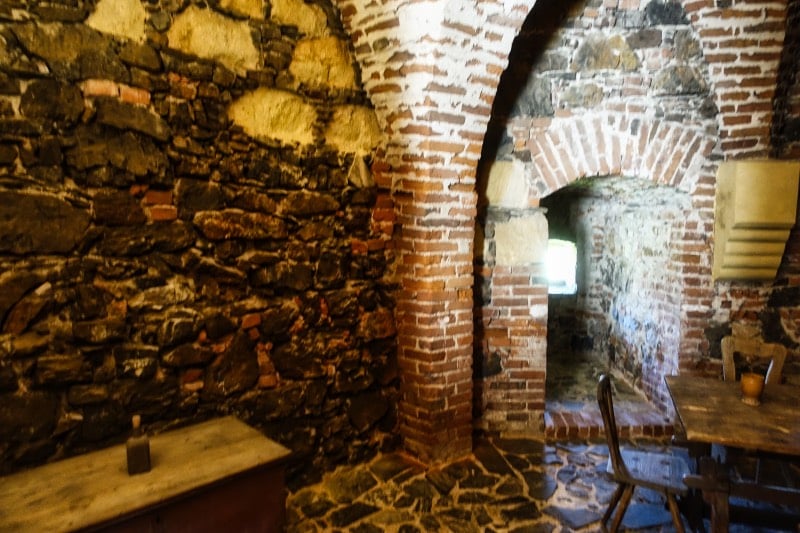
The captain’s office is furnished like an office with old furniture. Here we were pointed to something special. Directly above the door to the room is an opening in the wall. Behind it runs a corridor connected to the inner fortifications, which made it possible to reach all the strategically important places quickly. Clever, this way you didn’t have to walk through numerous corridors in the castle, but quickly got to the focal point during attacks.

Black kitchen
Through the northwest kennel we then entered the Black Kitchen. In the Black Kitchen, food was prepared for the nobility. The food was cooked over an open fire and the soot gradually blackened the walls. That’s why the kitchen was called the Black Kitchen. This room looked to me like I had always imagined a kitchen to look.
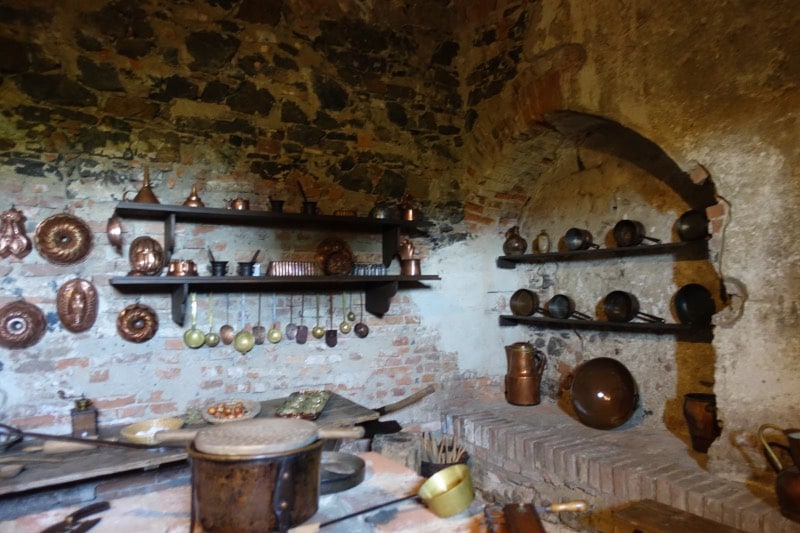
Bound and dried herbs hung on the walls, the copper kettles glinted and the large ladles hung ready to hand. All that was really missing was the beguiling smell of food. Astonished, I discovered some wafer irons. I had already seen similar irons in Peitz (Germany). I wonder if they were used in a similar way.
The 40-minute tour ended with a visit to the kitchen. I really enjoyed getting a slightly different insight into life in a castle.
Address:
Státní hrad Švihov
Žižkova 1
340 12 Švihov
Guided tours on offer:
The Castle – Life at the Noble Residence
Tour in Czech with booklets in English, German, French, Russian, Polish, Dutch
The kitchen – the castle’s operation
Guided tour in Czech with booklets in English, German, Russian
The Tower – the Way from Ruin to Monument Protection
Guided tour in Czech, booklet seen in German
On the Trail of Cinderella’s Shoe
Visiting hours:
1.1.- 31.3. closed
1.4. – 31.10. depending on the tour – see website of the provider
1.11. – 31.12. closed
Admission fee:
depending on the choice of tour:
Adults: CZK 100-150
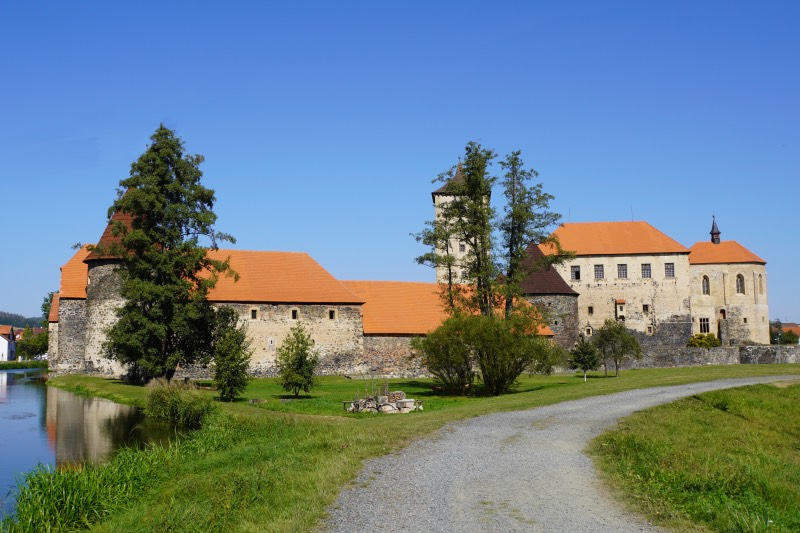
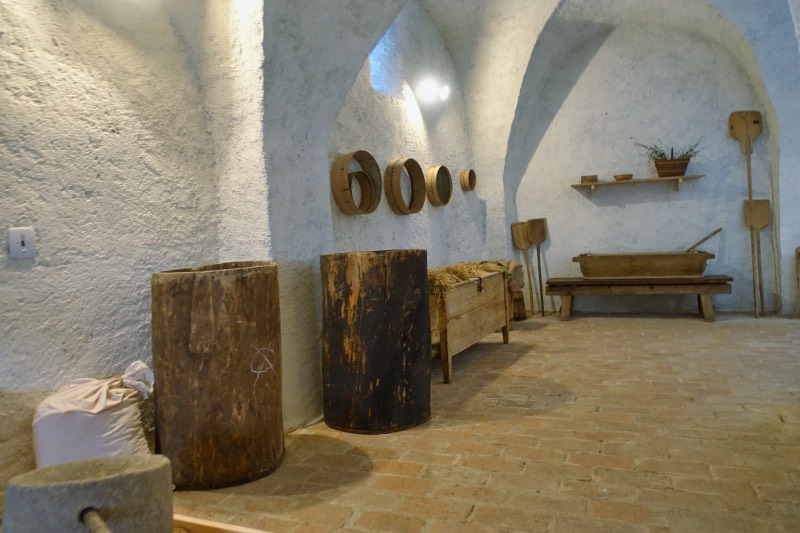
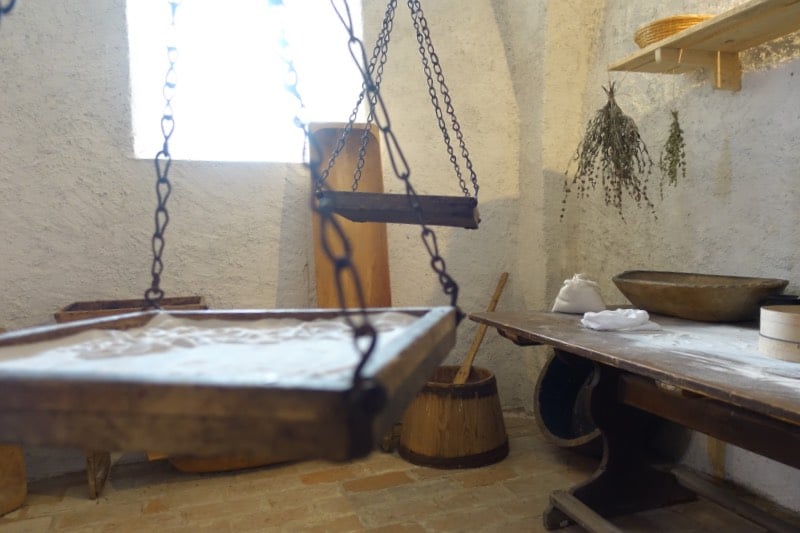
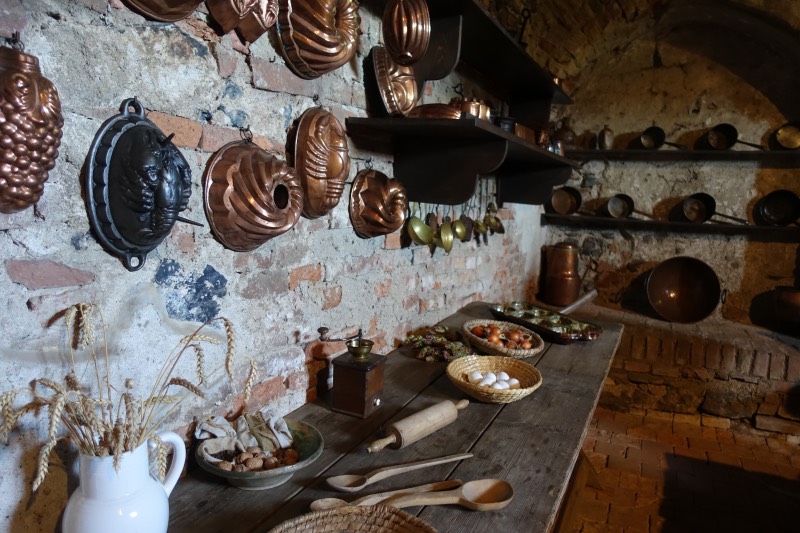
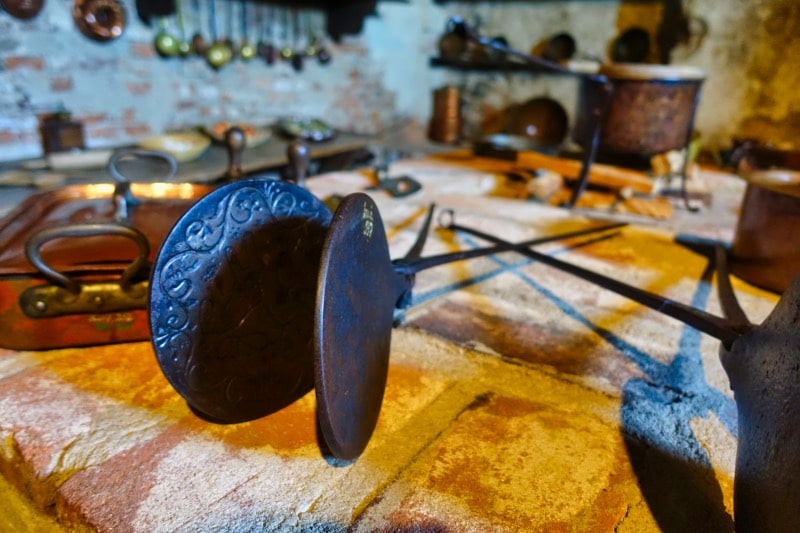
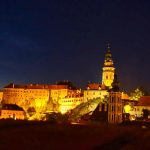

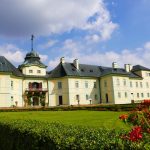
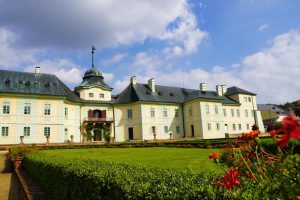
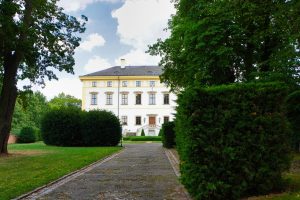
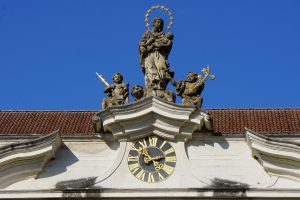
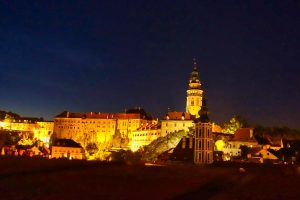
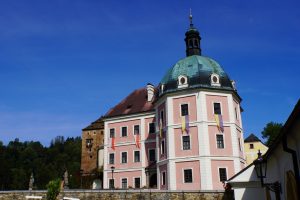
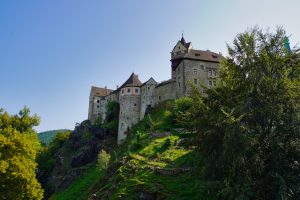
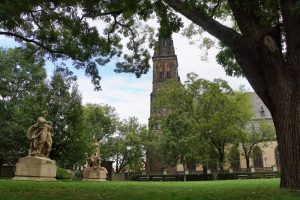

Leave a Reply